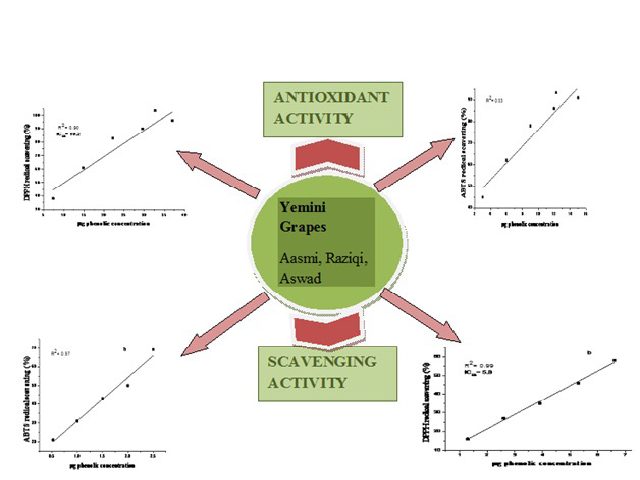Evaluation of the Antioxidant Potential and Antioxidant Enzymes of Some Yemeni Grape Cultivars
DOI:
https://doi.org/10.5530/fra.2017.1.11Keywords:
Antioxidants, Yemeni grape, Flavonoids, Antioxidant enzymesAbstract
Objective: The evaluation of antioxidant activity of grape from different cultivars was conducted by several methods. Materials and Methods: Scavenging of 2,2-diphenyl-1-picrylhydrazyl (DPPH) radical, scavenging of 2,2’-azino-bis (3-ethylbenzo-thiazoline-6-sulfonic acid) (ABTS) and formation of phosphate/molybdenum complex. Results: The phenolic content of peel and flesh from different cultivars of grapes showed concentration dependent scavenging of DPPH and ABTS radicals and formation of phosphate/ molybdenum complex. The results appeared high values of correlation coefficient (R2) between phenolic content of grapes and antioxidant activity indicating the strong correlation. The antioxidant assay IC50 value was variable among different grape cultivars. The activities of antioxidant enzymes were screened in the crude extracts of the peel and flesh of the grape cultivars tested, which had high, moderate and low levels of polyphenol oxidase, peroxidase and catalase, respectively. Conclusion: The results indicated that the imported grapes retained the most antioxidant activities. Finally, this study will be supply information on the antioxidant activity of grapes that benefits grapes producers, nutritionists and consumers.
Downloads
Metrics





